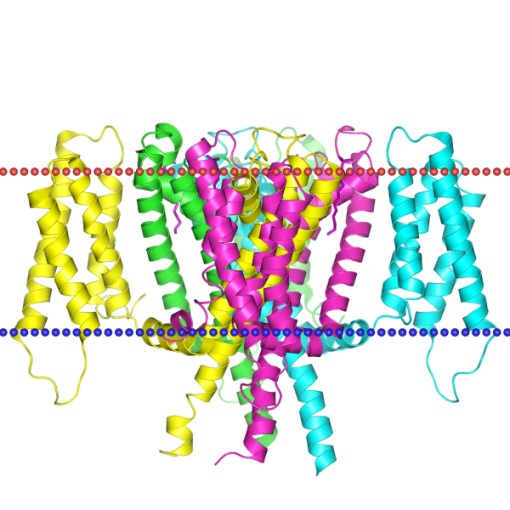Mempro™ Ion Channel Superfamily Production
With years of experience in the field of recombinant membrane protein production, Creative Biostructure now provides our most advanced Mempro™ custom ion channel superfamily production service for various applications.
The ion channel proteins are pore-forming proteins or complexes that construct channels for the flow of certain ions across the hydrophobic plasma membranes or membranes of organelles. Ion channel proteins have two distinctive features which make them different from other ion transporter proteins. First, the ion channel proteins can perform the ion transportation in a very high through rate, which often reach the level of 106 ions per second or even higher. Another distinctive feature of ion channel proteins is that the ions can only pass through their specific channels down their electrochemical gradient with no need for metabolic energy. The ion channel proteins are identified in the plasma membrane and membranes of intracellular organelles in nearly all kinds of cells. The ion channel superfamily can be further catalogued into eight families (OPM data base) such as voltage-gated ion channels, inward rectifier potassium channels, inward rectifier potassium channels, transient receptor potential channels, polycystin cation channel, two pore channels, voltage-sensing proton channel, and ryanodine receptor.
 Figure 1. Structure of Bacterial cyclic nucleotide regulated ion channel. (OPM)
Figure 1. Structure of Bacterial cyclic nucleotide regulated ion channel. (OPM)
With State-of-art cell-based recombinant membrane protein production platforms and years of experience in the field of recombinant protein production, Creative Biostructure can provide you our most advanced Mempro™ custom ion channel superfamily protein production services using cell based systems as well as other techniques. Various expression systems are available for customers to meet different experimental requirements, including:
Mempro™ Protein Production in Bacterial Cells System;
Mempro™ Protein Production in Yeast Cells System;
Mempro™ Protein Production in Incest Cells System;
Mempro™ Protein Production in Mammalian Cells System.
Cell based systems are the most mature methods that have been most widely applied in the recombinant protein production assays. Creative Biostructure will develop the optimal strategies according to your special requirements and the characteristics of target ion channel superfamily proteins or protein fragments. We normally take the bacteria systems (E.coli systems) as our first choice for its advantages such as fast, high yield and relatively low cost. But in some cases it can be difficult to expressing target protein successfully using bacteria systems. What's more, the application of bacteria system is also limited because of lacking the ability to achieve post-transcriptional modifications (PTMs). Yeast systems are also good choice as they combine the advantages of both eukaryotic and prokaryotic characteristics such as being single cells, the ability of perform PTMs, easy genetic manipulation, fast growth, and a secretory pathway leading to correct protein processing.
The insect cell systems and mammalian cell systems are advanced methods for recombinant protein productions. Insect cell systems are developed from transfected insect cell lines such as SF9, HI5, etc, and combined with vectors derived from baculovirus. The insect cell systems are suitable for high yield production of secret proteins. Among all of the cell-based methods, mammalian cell systems are the most powerful tools as they provide a nearly native environment for the expression of eukaryotic proteins. Despite the relatively high cost, mammalian cell lines such as CHO, BHK-21, HEK293, COS, HeLa and GH3 are widely applied for recombinant integral membrane protein production.
Creative Biostructure can also provide other Mempro™ custom recombinant protein production services using multiple advanced techniques. Welcome to contact us for more details.
Reference:
Ortells, Marcelo O., and George G. Lunt. "Evolutionary history of the ligand-gated ion-channel superfamily of receptors." Trends in neurosciences 18.3 (1995): 121-127.
Changeux, Jean-Pierre. "The nicotinic acetylcholine receptor: the founding father of the pentameric ligand-gated ion channel superfamily." Journal of Biological Chemistry 287.48 (2012): 40207-40215.
C. Trometer, and P. Falson (2010). Mammalian membrane protein expression in baculovirus-infected insect cells. Methods Mol. Biol., 601: 105-117.
S. Schlegel, et al. (2013). Bacterial-based membrane protein production. Biochim. Biophys. Acta., 1843(8): 1739-1749.